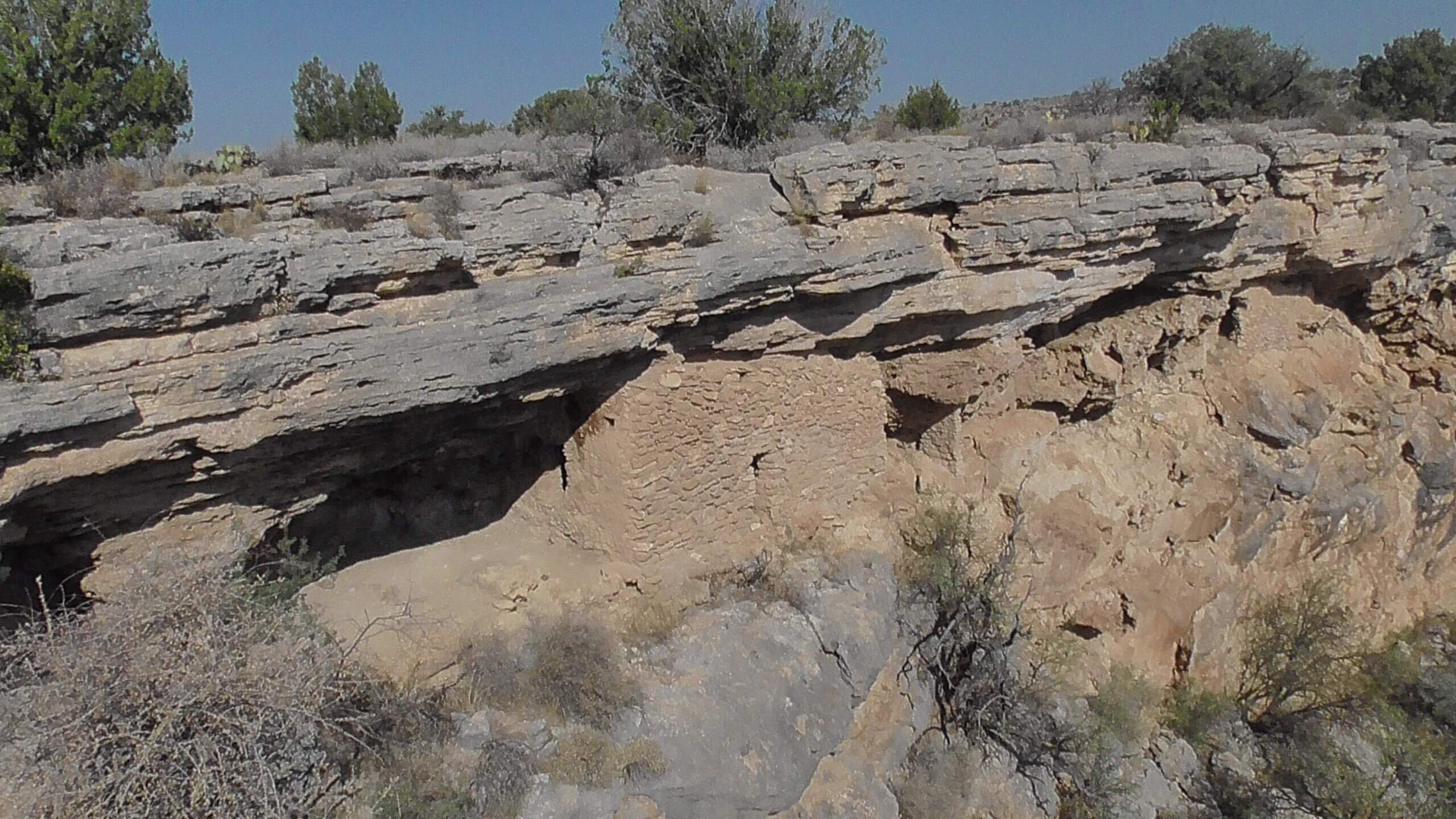Montezuma Well receives less than 13 inches a year but still contains over 15 million gallons of water. Every day, the Well is replenished with 1.5 million gallons of new water from underground sources. The Hohokam and later the Sinagua took advantage of this water and even built an irrigation canal from the outlet that ran for miles to irrigate their crops. Some cliff dwellings still remain inside the sinkhole that holds the water. By 1425, the people had migrated to other places. The Hopi, Zuni, and Yavapai all recount oral histories of their ancestors living here.
The water has so much carbon dioxide (more than 80 times the typical freshwater concentration) in it that fish cannot survive. It also has enough arsenic (40 parts per billion) that it will affect the health of humans but would take a lifetime to kill them. Endemic species include amphipod crustaceans that eat the diatoms (algae) that only grow there. During the day the amphipods remain deep enough to stay safe from diving ducks. At night carnivorous leeches (also endemic) eat them. These Montezuma Well leech populations are thought to have been isolated from other leech populations for as long as 11,000 years. If the amphipods surface at night, water scorpions (actually insects) eat them.


